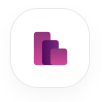What is HR transformation? Key components and benefits
Table of contents
Artificial intelligence, robotics, virtual reality, and machine learning are a tsunami that has smothered societies, cultures, economies, and businesses. As machines take over human tasks and can do them better and faster, humans can focus on what makes us human. After all, it’s through the development and transformation of human resource departments that technology is put to better use.
What is HR transformation?
HR transformation aims to make human resource management more efficient by adopting technologies so people can focus less on administration and more on strategies.
Key components of HR transformation and benefits of adopting them
While there is massive potential in HR transformation through technology adoption, it’s also important to consider specific company goals. Here are some components that can help you maximize the success of your information strategy.
High-value tasks
According to a study by G&A Partners, HR spends 73 percent of its time on administrative activities.
Automation frees up time for the HR professional by automating quickly repeatable and low-value tasks, and this time can be used to perform other high-value tasks. Beyond freeing up time for other processes, switching from manual to automated or tech-supported HR processes increases efficiency in areas like talent sourcing.
Recruitment process
According to benchmarking data from the Society for Human Resource Management (SHRM), the average cost per hire in 2021 was nearly $4,700.
Hiring in the pandemic era took a massive digital turn, with employees being hired virtually. HR leaders had to quickly develop skills for hiring remotely and screening employees without meeting them, including finding and leveraging technology to attract, hire, and retain employees remotely.
Recruitment automation helps HR automatically screen candidate resumes and eliminates unqualified candidates’ resumes from the list using keyword filtering.
Use tangible facts to make well-informed recruiting decisions
Instead of using guess work to identify and recruit candidates, use this guide to build a productive and predictable data-driven recruiting process.
Onboarding process
As per an SHRM study, more than half of employees are more likely to still be at a company three years after being hired if they go through a structured new employee onboarding program.
From the moment a candidate signs an employment contract to the first day on the job, HR professionals deal with multiple manual tasks, including employee orientation and meeting with a team. Onboarding tools can personalize new hires’ onboarding journeys while automating manual tasks HR specialists are responsible for.
Digital HR transformation enables new platforms designed especially for onboarding and improves the overall employee onboarding experience, even if employees are hired remotely.
When employees are clear about their roles and scope of work, they understand the importance of collaboration and shared efforts. Digitizing HR systems provides employees with the required visibility, stimulates better collaboration, and generates insights for strategic roadmaps that help teams and the business.
Productivity assessment
According to Zippia research, the average employee is productive for 2 hours and 53 minutes a day. That’s only 31% of the average 8-hour workday.
Workforce analytics helps HR leaders assess workforce performance. HR analytics — also known as people, talent, and workforce analytics — refers to how human resources teams can leverage the data in their processes to better meet a department’s strategic goals, whether they are related to recruitment and hiring, retention, motivation, or development.
With tracking of individual KPIs and staff allocation and by enabling employees to track their workloads, digital HR transformation enables HR leaders to improve productivity and avoid corporate process bottlenecks.
Talent management systems
A recent HBR study shows managers spend only 7% of their time on developing their people.
A successful hire doesn’t end with signing a contract but continues through the new employee’s orientation. Similarly, a newly promoted employee must be trained in the new responsibilities after their predecessor leaves the company. A talent management system gives HR leaders feedback on performance management, learning and development, compensation management, and succession planning.
Agility in the new way of work
In a survey conducted by HR.com, 60% of businesses unanimously agreed that they saw cost-saving benefits within twelve months of using a workforce management solution.
The swiftness of the shift to hybrid and remote work in the past year has proven that even the most outdated institution can embrace digital transformation.
However, switching to remote work has meant that HR leaders must discard old manual working methods. Shifting all employee processes online, putting payroll in the cloud, and even outsourcing HR and payroll processes have helped organizations respond, adapt, and thrive in any disruption.
Predicting attrition
According to Gartner, on average, each departing employee costs an organization $18,591.
HR transformation enables HR managers or leaders to segregate talent into various buckets based on the risk of attrition. Through analysis of various metrics, organizations can get insights and answers to questions such as the rate of their total talent at high risk and the focus areas that need to be worked on.
The key to successful HR transformation
The success of HR transformation will depend on whether every employee and manager is ready to anticipate, innovate, and participate in each step of the process. Organizations must change their perspective, as there is a solution to every problem by identifying the right digital opportunities, technology selection, and so on.
The right approach to HR transformation is to understand the future before planning the future. Developing a digitally enabled team while waiting for technology vendors to show up with a prebuilt set of processes and work procedures can cause your company to get way behind the competition. Smart firms seek opportunities and derive serious strategic advantages from these new technologies. Contact our consultants to learn how we can help you proactively take steps to transform your HR department to create a future-proof work environment.
Stay up to date with our newsletter
Every month, we’ll send you a curated newsletter with our updates and the latest industry news.



























 info@hrforecast.de
info@hrforecast.de
 +49 89 215384810
+49 89 215384810






